
Category: Cooperative Extension
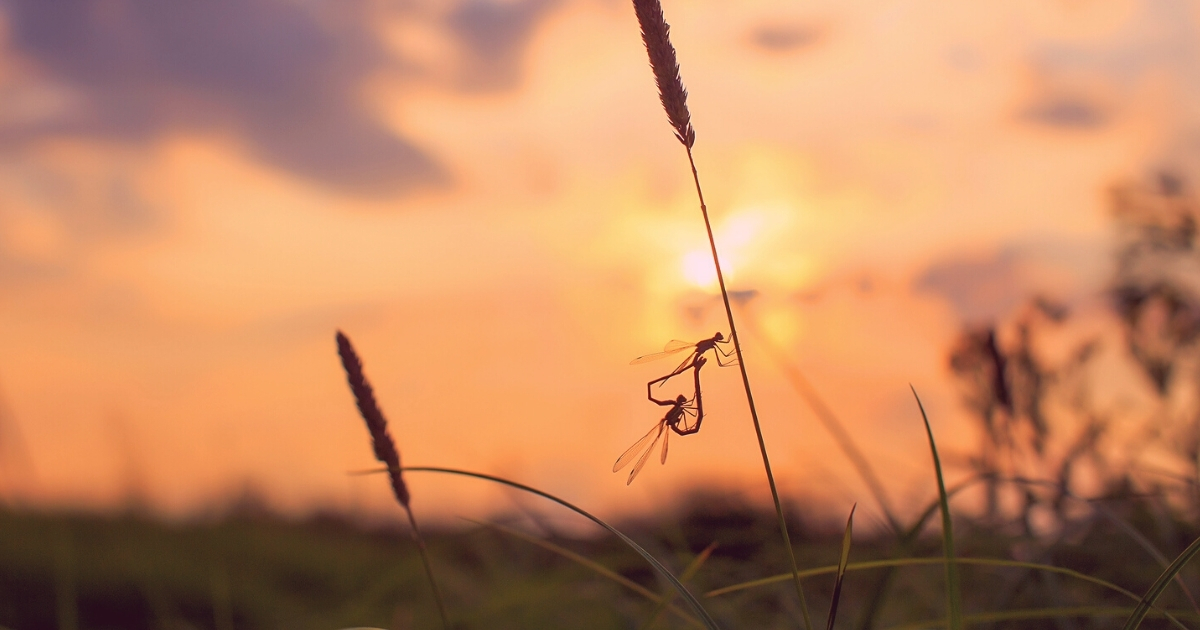
L ’amour de insecta
February 11, 2021 Written by David Owens, Extension Specialist - Agricultural Entomology
Ah, l ’Amour! Whether by quirks of behavior or by common name, these five insects are embodiments of Valentine’s Day, even if most of them are hibernating right now.
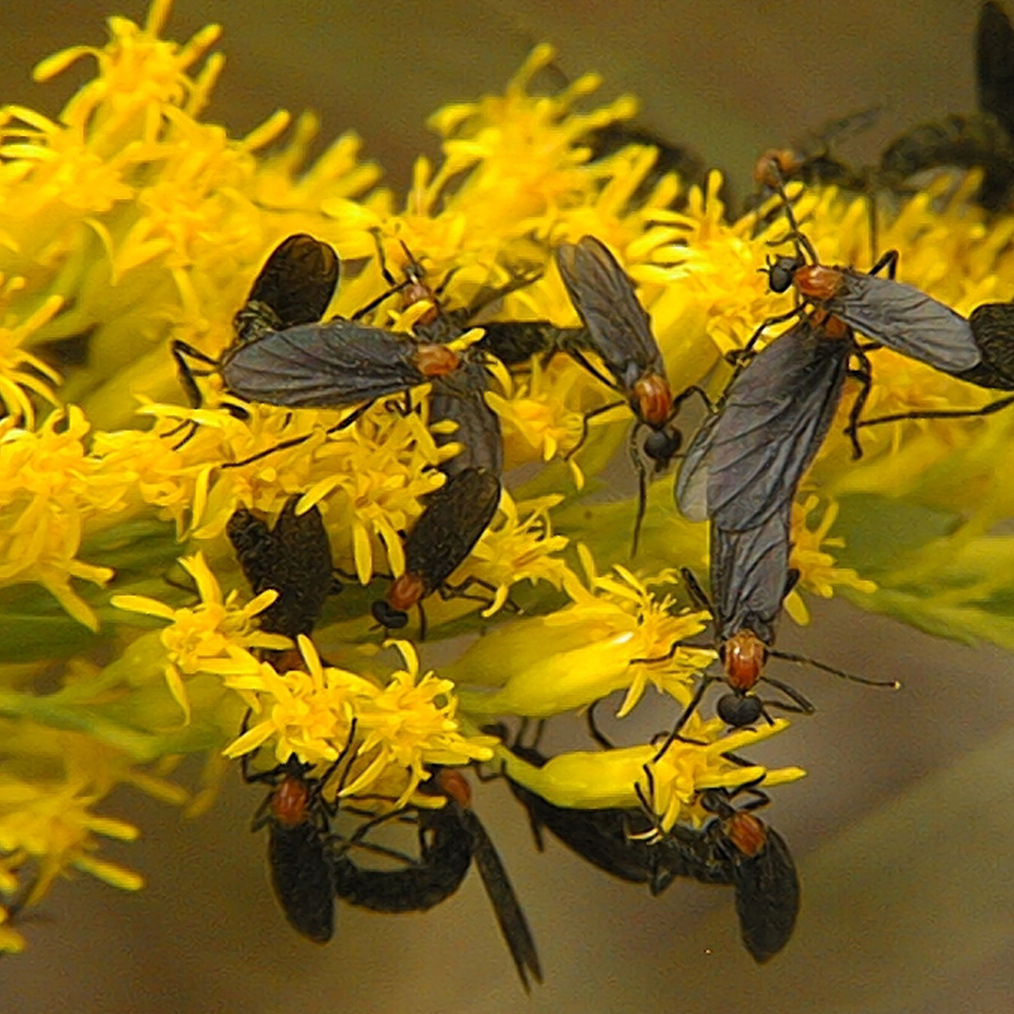
Love Bugs
Their name says it all. These winged critters should be the face of Valentine’s Day everywhere. Well, unless you live in Florida, where they are reviled. Love bugs are not actually bugs but flies, in the family Bibionidae, or March Flies. Love bugs are native to the Gulf Coast and started spreading into Florida around the late 1940s to early 1950s. Popular myths about these amorous bugs include genetic experimentation gone wrong to create a mosquito-eating fly. Nothing could be further from the truth.
In Florida, the immatures complete their development on moist, decaying organic matter and the swampy ground and high rainfall conditions of Florida are perfect for them. They have two generations in most of Florida; the southern part of the state gets another smaller flight. Enormous mating flights emerge that can pose traffic hazards, especially because they are attracted to exhaust fumes.
But it’s not their love of classic cars that gives them their names. They are called love bugs because when the two sexes come together, they stay together, even while flying. They stay together for more than half a day and, by day 4 or 5, the females have laid their eggs and passed away.
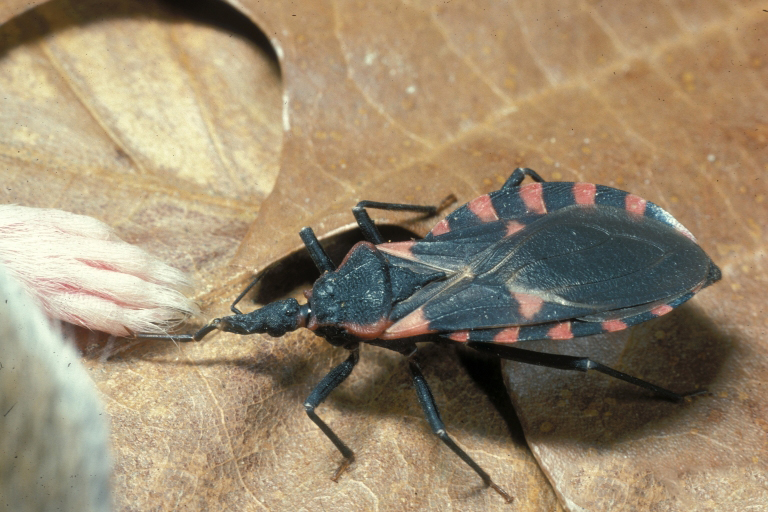
Kissing Bugs
Now this insect’s name is deceptive. Kissing bugs do not kiss because they love each other or people. Rather, their object of affection is blood. Vampire bug might be a more accurate description. Kissing bugs are a group of assassin bugs in the subfamily Triatominae. Most of this subfamily members are native to North and South America — from the tropics to temperate zones.
They also carry a protist pathogen that causes Chagas Disease. Chagas Disease eventually results in nerve damage, enlarged colon and heart failure after 10-30 years. Efficient vectors defecate while feeding and the host scratches the welt, introducing the disease into the bloodstream. Although there are North American species (Eastern cone nose), they are poor vectors because they are tidy feeders and only defecate off the host. So there is little to worry about when you find the somewhat common Eastern cone nose bug.
There are also several similar-looking but unrelated members of the family; the only thing you need to mind is not to carelessly pick them up. Their bite hurts. A lot. That said, it is best not to entertain these dates.
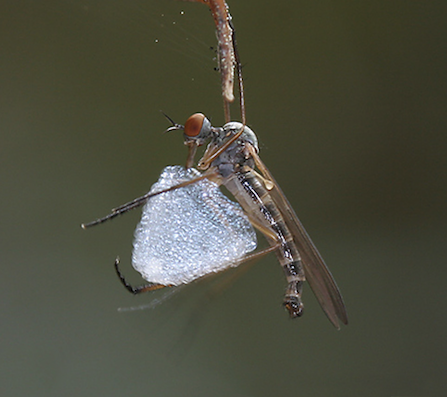
Balloon Flies
Balloon flies are a group of small brown flies with long legs and long, dagger-like mouthparts. In fact, dagger fly is another common name for this group of predatory fly. So how do they embrace the spirit of Valentine’s Day? In some species, male balloon flies display elaborate courtship behavior. They first find a prey item and then wrap it up carefully in silk. The more the silken packet is wrapped, the longer it takes the female to unwrap it and feed on the nuptial gift.
However, some balloon flies cannot be trusted. While some males go big and prepare very large gifts, others are cheaters. Some males figure that it is easier to wrap up an empty gift than to actually get a gift. While the female is unwrapping her ‘gift’ the male mates with her, at least until she discovers his treachery. In other species, the gift is so valuable, though that it is the female that must impress the male.
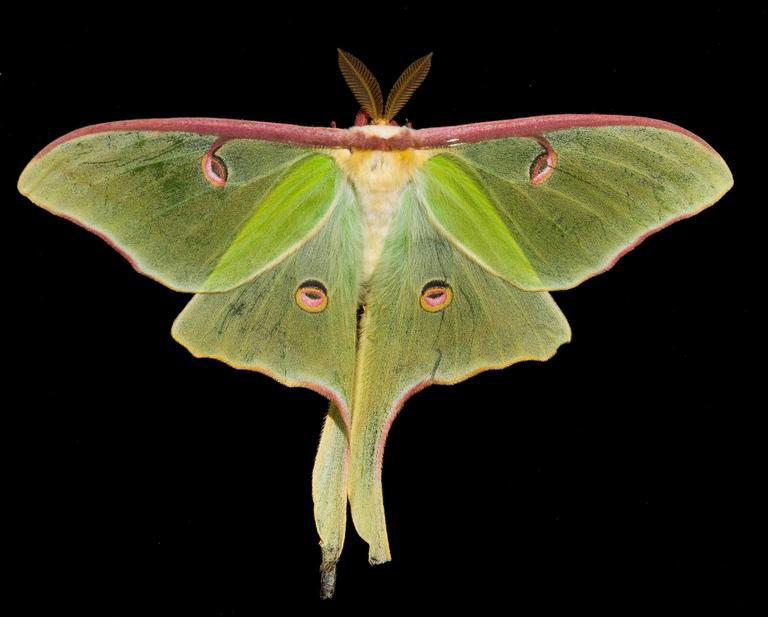
Silk Moths
The family Saturniidae consists of the largest and most beautiful of moths. Common North American species include the Luna moth, the Polyphemus moth, Regal moths and Cecropia moths. The silk moths are responsible in part for helping us identify sex pheromones. These pheromones are vital for monitoring insect pests as well as controlling them by hopelessly confusing males. Male silk moths have very feathery antennae that are jam-packed with sensory cells to identify tiny amounts of sex pheromone. They are so sensitive that males can be attracted to a single female from several miles away.
In the 1950s, hundreds of thousands of silk moths were harvested to eventually identify the first pheromone structure in 1959. Less than ten years later, laboratories were able to synthesize pheromones for dozens of species and use them for targeted, species-specific, environmentally friendly pest control. If enough sex pheromone is deployed in an area, males can no longer find the real deal. And so females are never mated, never lay eggs, and the injurious larvae never consume the plants.
We owe much of our understanding of biology and owe a great deal of environmentally friendly and sustainable crop protection methods to the awe-inspiring sensitivities of silk moths.
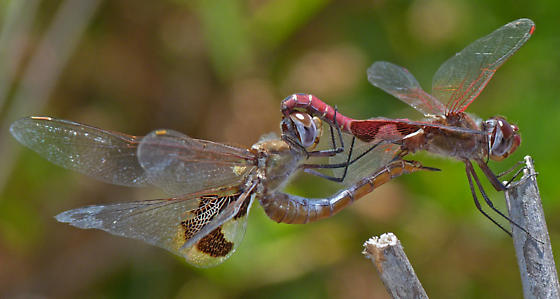
Dragonflies and Damselflies
Dragonflies do not seem to have much in the way of romance about them. They fly near ponds, lay eggs in water and the immatures (naiads) are sit-and-wait predators. When those naiads finish development, they crawl out of the water and shed their immature exoskeleton for that of a winged adult.
Dragonflies are rather territorial creatures and can frequently be seen chasing other dragonflies. Males are also the victim of some awkward plumbing. When they mate, the male holds onto the female’s neck while the female bends herself into the proper position. The resulting arrangement is called the ‘wheel’ formation. This position looks somewhat like the heart-shape we often think of on Feb. 14.
Valentine's Day is the perfect day to tell someone how special they are to you — and to spend some quality time together! Enjoy trivia? The insect world is full of trivia! We recommend spending some time this Feb. 14 chatting about the fun (and not-so-fun) facts above!
